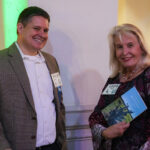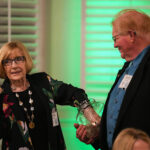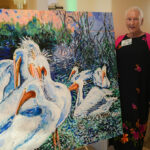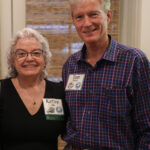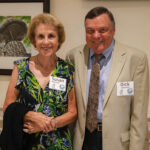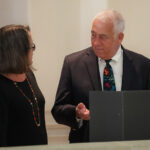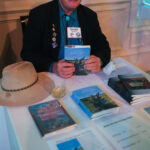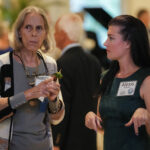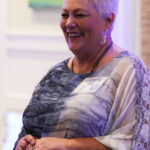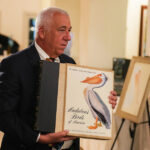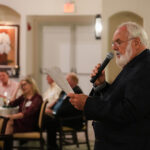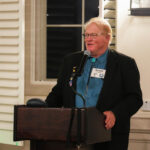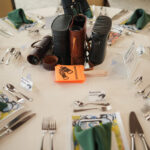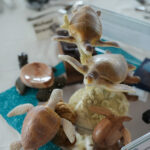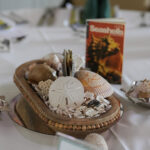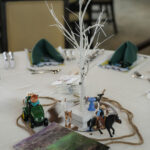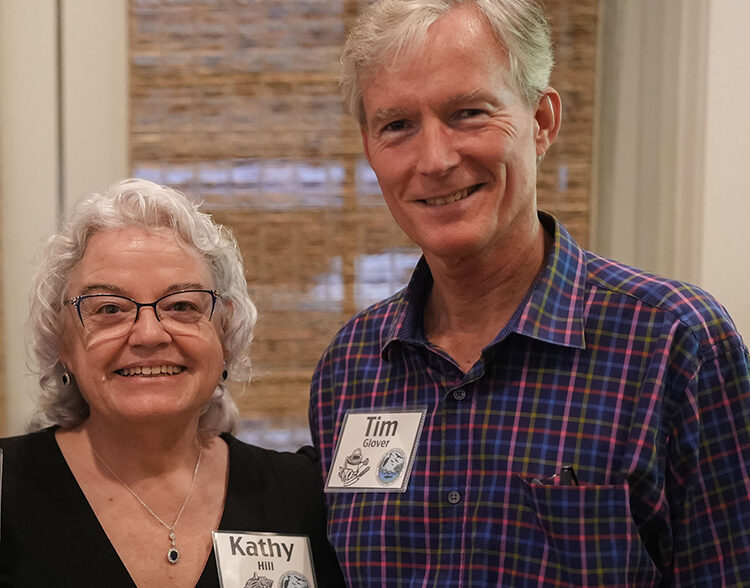
Environmental enthusiasts gathered to support the Pelican Island Audubon Society at the ‘Saving Paradise: Protecting What You Value’ fundraiser at the Grand Harbor Golf Club.
Before settling in at tables adorned with birding-themed items, such as binoculars, picnic baskets, turtles, old cameras and pelicans, guests mulled over a variety of auction items.
While most think of PIAS interests as ‘for the birds,’ the protection and restoration of the Indian River Lagoon has always been of great interest to the nonprofit, which recognizes the importance of safeguarding the habitats of waterbird populations.
“Looking around the room, I’m filled with inspiration and hope. We face daunting environmental decisions about our very own piece of paradise here in Indian River County. With you all as allies, I have no doubt that we are going to be embarking on an age of unprecedented progress toward saving what we value,” said Donna Halleran, PIAS executive director.
Commenting on the rapid, unplanned growth we are currently experiencing, Halleran said far too many people “fail to use their education, profession, power or wealth to preserve and protect the animals, plants and natural environment for a better future. It’s within our power to create real and lasting positive change.”
Kathy Hill, deputy director of the Indian River Lagoon National Estuary Program, shed some light on the current state of the lagoon and steps being undertaken to repair the damage caused by stormwater discharges and wastewater.
“These are all the same problem. We’re putting too many nutrients (nitrogen and phosphorous) into the lagoon, and it can’t absorb it,” said Hill.
She explained that when there are too many nutrients, that pollution can create algae blooms which grow faster than seagrass. As a result, the algae shades out the seagrasses and prevents them from getting enough light to grow.
Along with the boom in construction comes an increase in the population which, in turn, impacts the wetlands more and more. However, Hill says there is still hope and plenty of work is underway.
In 2022, she said, 303 projects were taking place in the areas of water and habitat quality or improvements to the lagoon. “We’re so busy getting the work done that we don’t take a lot of time to tell people what we’re doing,” said Hill.
She noted that funding and government oversight have increased or are in place, with local, state and federal funds earmarked for research, restoration, infrastructure and mitigation.
Admitting that what she had covered were “big, expensive, hard-to-fix problems,” Hill said there are things everyone can do.
“Every little bit really does help, so get involved. We wish every person in every county would get involved,” continued Hill.
Options include:
- Attending City Council, Planning and Zoning, and County Commission meetings to learn how the community is planning to grow.
- Volunteering with conservation-based nonprofits.
- Living lagoon-friendly (homeowners apply five times more fertilizer than agricultural operations on a per-acre basis).
- Purchasing Indian River Lagoon license plates, $15 of which goes toward lagoon projects in Volusia, Brevard, and Indian River Counties.
Sean Sexton, Indian River County Poet Laureate and a third-generation county resident from a pioneer family that has always had a close relationship with the land, closed the evening by reading “Our Rivers Are Hiding” from his recently published collection of poems, “Portals.”
“This is where I intend to spend my life. I wouldn’t want to be somewhere I hadn’t taken care of,” said Sexton, commenting on the relationship between his family’s cattle ranch and the lagoon.
For more information, visit PelicanIslandAudubon.org.
Photos provided


